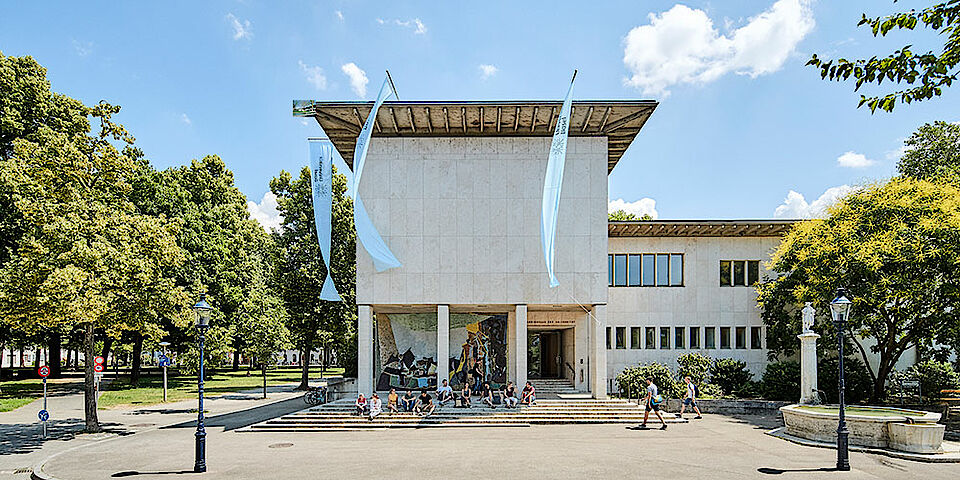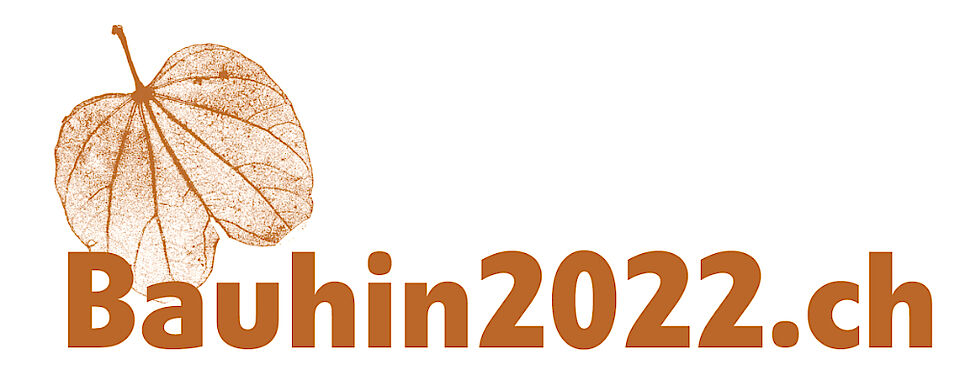
Program
Thursday, 15 September 2022
| 07h45 | Registration opens |
| 08h30 | Workshop & discussion This workshop will facilitate exchange among all stakeholders of herbarium-based research, from researchers- and curatorial perspectives. In smaller, interdisciplinary discussion groups, in which you actively participate, you will discuss (unrealized) potential of herbarium-based research, and discover other participants' perspective on how to realize them. The workshop represents a marker of ideas prior to the conference' talks, and also functions as ice-breaker. In the plenary discussion at the end of the meeting, we will revisit ideas that surfaced in the workshop, and assess whether we should update them. |
| 10h00 | Break |
| 10h30 | Prof. Dr. Dr. h.c. Andrea Schenker-Wicki, president of the University of Basel: Greeting message |
| 10h35 | Jurriaan M. de Vos, Organising Committee: Introduction |
| 10h45 | Keynote talk: Richard B. Primack, Boston University, USA: Mobilizing herbarium specimens, botanical gardens, historical data sets and citizen science observations to investigate the biological effects of climate change** |
| 11h20 | Ansgar Kahmen, Dept Environmental Sciences, Basel University, Switzerland: The stable isotopes composition of herbarium specimen reveals physiological responses of plants to environmental change |
| 11h40 | Kenneth M. Cameron, Department of Botany, U Wisconsin-Madison, WI, USA: A large phylo-floristic study reveals evolutionary constraints on the past, present, and future assembly of a unique regional flora in North America |
| 12h00 | Lunch break |
| 13h30 | Mark Carine, The Natural History Museum, London, UK: Documenting, understanding and opening the botanical collections of Hans Sloane (1660-1753) |
| 13h50 | Fred Stauffer, Conservatoire et Jardin botaniques de la Ville de Genève, Chambésy, Suisse: Digitization efforts of the phanerogamic Geneva herbarium (G, G-DC, G-BOIS, G-PREL): from 2004 to present |
| 14h10 | Luiza Teixeira-Costa, Vrije Universiteit Brussel, Brussels, Belgium: Parasitic flowering plant collections embody the extended specimen |
| 14h30 | Austin Mast, Dept of Biological Science, Florida State University, Tallahassee, FL, USA: Machines can be taught to identify phenological anomalies described on herbarium labels |
| 14h50 | Donat Agosti, Plazi, Bern, Switzerland: The significance of taxonomic publications to understand biodiversity in the digital world |
| 15h10 | Break & poster session |
| 15h45 | Urs Eggli, Sukkulenten-Sammlung Zürich, Switzerland: Impossible to press? – Succulents in Renaissance herbaria: The history of the struggle to prepare succulent plants for the herbarium |
| 16h05 | Tilmann Walter, Institut für Geschichte der Medizin, Universität Würzburg, Germany: Plants, gardens and herbaria. Physicians as the earliest botanists in Germany |
| 16h25 | Sarah T. Wagner, Institut für Botanik, Technische Universität Dresden, Germany: Network analysis of the herbarium collection of the Moravian Church from the 18th century |
| 16h45 | Jason Grant, Institut de biologie, Université de Neuchâtel, Switzerland: The herbarium of Swiss naturalist Jean-Frédéric Chaillet (1747-1839) meticulously records the plants and fungi of the Neuchâtel region of the Swiss Jura |
| 17h05 | Anastasia Stefanaki, Biosystematics, Wageningen University & Research, Wageningen, The Netherlands: Combining 16th-century botanical history and genomics to understand the complex taxonomy of the wild tulip, Tulipa sylvestris, in Europe |
| 17h25 | Leisure |
| 18h15 | Public lecture: Prof. Richard B. Primack, Boston University, USA: Climate change effects on wildflowers, trees and birds. Building on the observations of the famous American environmental philosopher Henry David Thoreau, author of «Walden» Henry David Thoreau is America’s most famous environmental philosopher and author of the book Walden. For the past 18 years, Professor Richard Primack and his team have been building on Thoreau’s records from the 1850s and other Massachusetts data sources to investigate the earlier flowering and leafing out times of plants, the earlier flight times of butterflies, and the more variable response of migratory birds. Plants are also changing in abundance due to a warming climate. This work is now being extended to the neglected autumn season. What would Thoreau tell us to do about global climate change if he were alive today? Note: different location: Bernoullianum, lecture room 148, Bernoullistrasse 30, Basel. See box "Conference venue". |
| 20h00 | Conference dinner |
Friday, 16 September 2022
| 08h30 | Keynote talk: Hernán A. Burbano, University College London, UK: A retrospective view on plant genetic diversity using ancient DNA** |
| 09h05 | Verena Schünemann, University of Vienna, Austria, and University of Zurich, Zurich, Switzerland: Ancient DNA analysis of medieval German grape seeds: How archaeological plant remains can contribute to the understanding of plant domestication |
| 09h25 | Jesse R. Lasky, Pennsylvania State University, USA: Using herbarium specimens to study biogeography and response to global change in Arabidopsis thaliana |
| 09h45 | Donikë Sejdiu, Inst of Evolutionary Medicine, University of Zurich, Switzerland: Herbarium DNA traces Phytophthora infestans strain that caused Irish Famine into 20th-century Europe |
| 10h05 | Break & poster session |
| 10h40 | Tinde van Andel, Naturalis Biodiversity Center, Leiden, The Netherlands: How did 16th century tomatoes look like? |
| 11h00 | Simon Aeschbacher, Dept of Evolutionary Biology and Environmental Studies, University of Zurich, Switzerland: Caspar Bauhin’s 400-year-old herbarium specimens reveal a mixed origin of early European tomatoes |
| 11h20 | Pablo Muñoz-Rodríguez, Dept of Plant Sciences, University of Oxford, UK: An integrated approach to studying tropical plant diversity: botanical monographs, herbarium specimens and sweet potato |
| 11h40 | Elizabeth M. Joyce, Faculty of Biology, Ludwig-Maximilians-Universität München, Germany: Herbarium specimens reveal inter-continental migration tracks, phylogeography and taxonomic boundaries of a widespread tropical tree |
| 12h00 | Lunch break |
| 13h30 | Yvonne Willi, Dept Environmental Sciences, Basel University, Switzerland: Evidence for parapatric speciation in selfing Arabidopsis revealed by herbarium specimen |
| 13h50 | Gabriel F. Ulrich, Inst of Integrative Biology, ETH Zurich, Switzerland: Harnessing herbaria to assess geographic extent and genetic consequences of habitat loss |
| 14h10 | Malene Nygaard, NTNU University Museum, Norwegian University of Science and Technology, Trondheim, Norway and Natural History Museum and Botanical Garden, University of Agder, Kristiansand, Norway: Spatiotemporal monitoring of the rare Northern dragonhead, Dracocephalum ruyschiana (Lamiaceae) — SNP genotyping and environmental niche modelling herbarium specimens |
| 14h30 | Meeting summary, workshop results & general discussion |
| 15h00 | Two guided tours: |
| 17h30 | End of symposium |
Contact
Program & conference booklet
Conference venue

University of Basel
Main building (Kollegienhaus)
Petersplatz 1
Lecture room 120 (1st floor)
4051 Basel – Switzerland


